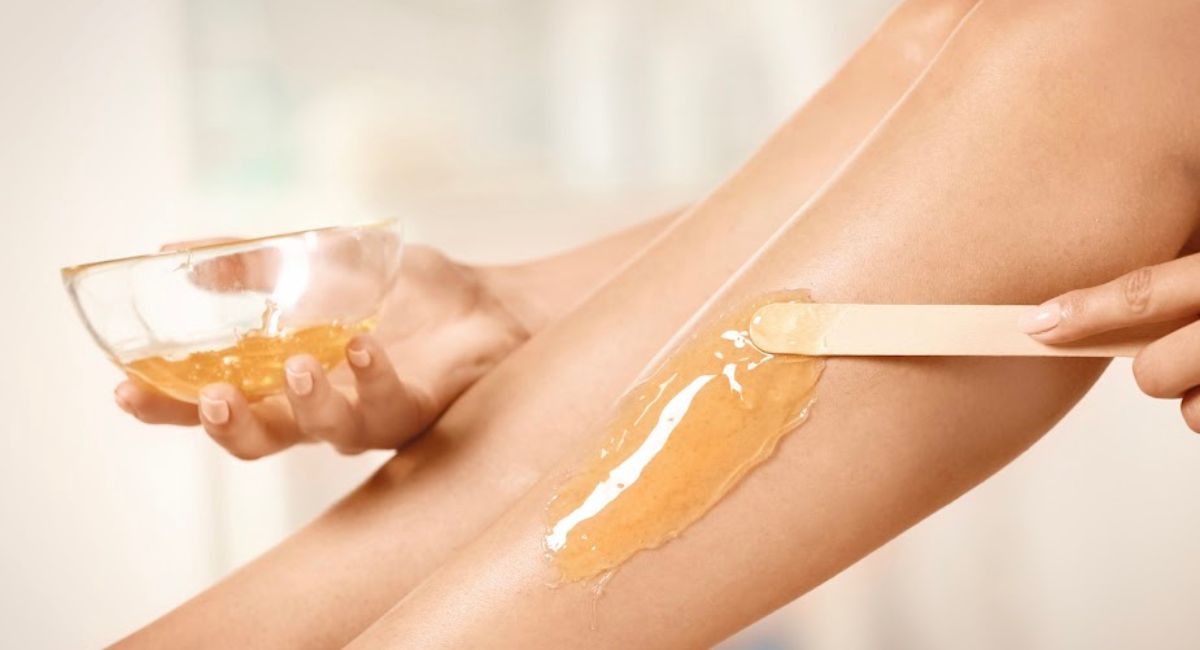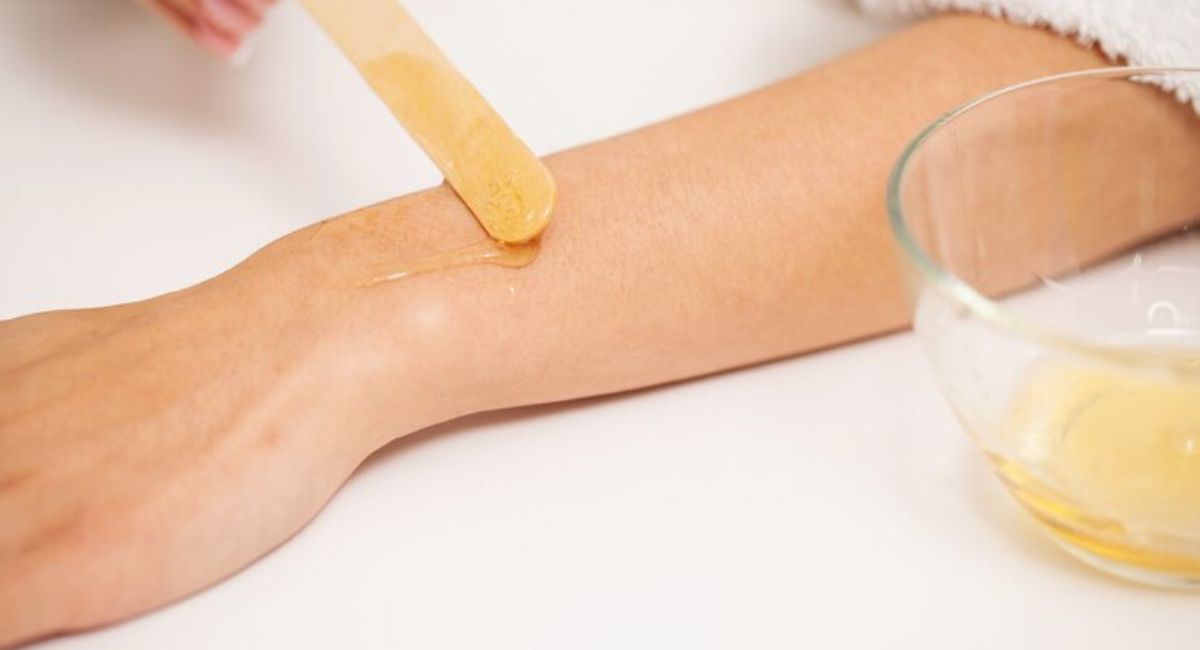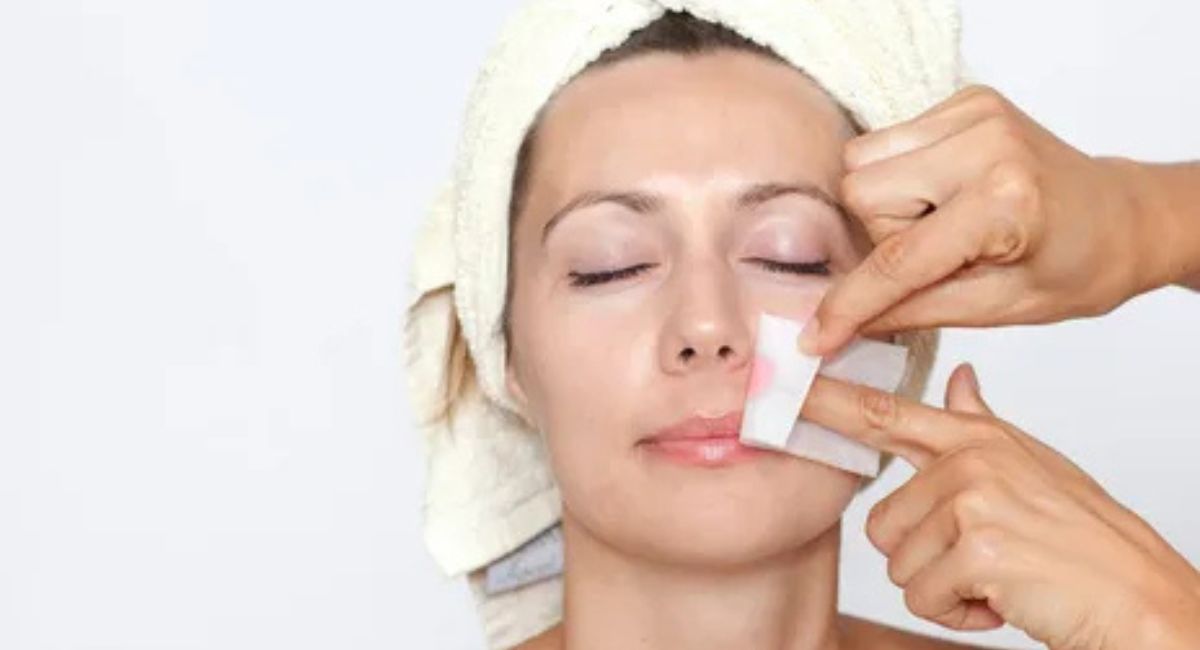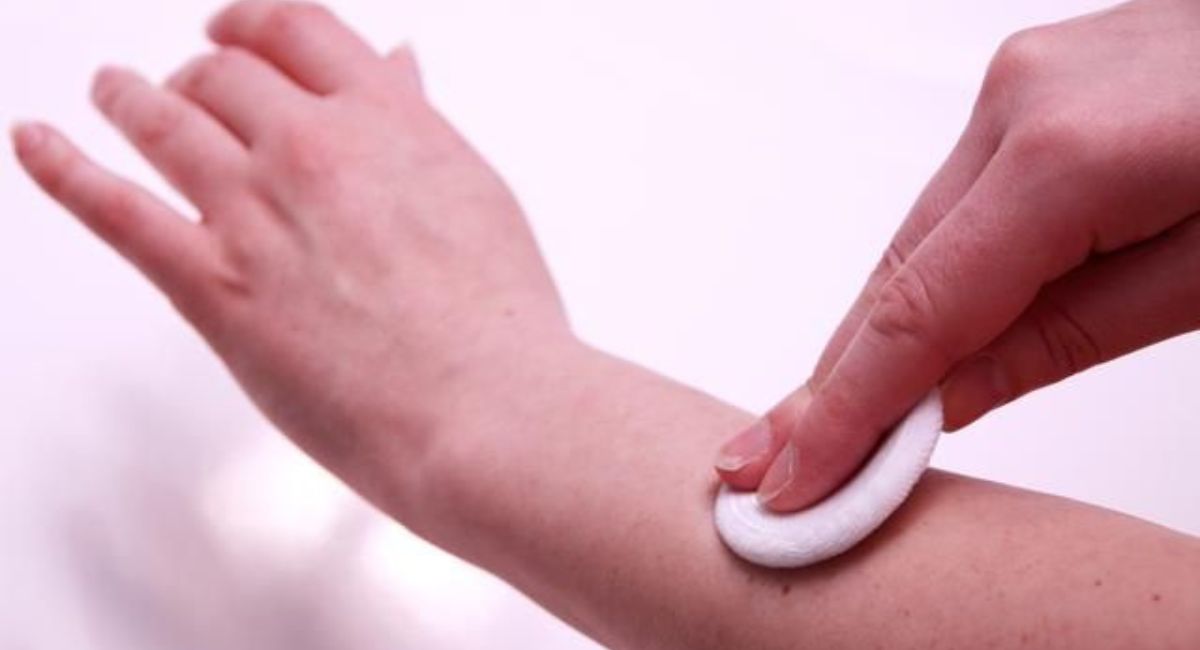Ever tried to clean up after waxing only to realize that sticky wax just won’t come off? It’s frustrating, right? You think you’re done, but there’s still wax residue on skin that feels tacky and uncomfortable. It can even cause redness or irritation if you rub too hard trying to get it off.
If that sounds familiar, don’t worry—you’re in the right place. This guide will show you how to get wax off skin safely using quick, gentle methods that actually work. You’ll learn about the best natural oils, simple home remedies for wax removal, and expert tips to soothe your skin so it feels soft and clean again.
Why Does Wax Stick to Skin After Hair Removal?
The reason why wax sticks to the skin comes down to a mix of skin oils, heat, and waxing technique. When your skin isn’t properly prepped—like skipping exfoliation or applying lotion before waxing—the wax can grip the surface instead of just your hair. This is why people often struggle with wax stuck to skin after waxing or small patches that won’t peel away.
Wax residue also appears if the wax cools too quickly or is spread unevenly. Low-quality products can leave more residue because of their ingredients. Understanding what causes wax to stick to skin helps you prevent it next time by keeping your skin clean, dry, and slightly warm before applying wax.
| Cause | Result | Prevention |
|---|---|---|
| Oily or dry skin | Wax grips skin unevenly | Clean and exfoliate before waxing |
| Wax too cool | Sticks more | Use warm, not hot wax |
| Poor-quality wax | Leaves residue | Choose salon-grade or trusted brands |

Is It Safe to Remove Wax at Home?
Many people wonder, is it safe to use oil to remove wax? The answer is yes—if you do it right. You can safely remove leftover wax after waxing at home using gentle wax removal methods. Always use clean hands, warm water, and soft cloths to avoid skin damage.
Dermatologists in the U.S. often recommend DIY wax removal techniques like using baby oil to remove wax or applying coconut oil for removing wax. These methods dissolve wax naturally and keep the skin hydrated. Remember, home waxing safety tips include doing a patch test, using natural oils, and avoiding harsh scrubbing, especially on sensitive areas.
Best Ways to Get Wax Off Skin Safely
The best way to remove wax naturally starts with applying warmth. Use a warm, damp towel to soften the wax. Then gently rub natural oils for wax residue like olive, jojoba, or coconut oil over the area. The wax melts slowly without irritating your skin.
If you still see residue, you can repeat the process or try a bit of petroleum jelly. It’s one of the best products for removing wax residue as it loosens the sticky parts effectively. These gentle wax removal methods are safe for all skin types and can even help you prevent wax build-up on skin over time.
How to Remove Wax Without Hurting Sensitive Skin
If you have delicate or easily irritated skin, you need to know how to remove wax without irritation. Always start with lukewarm compresses instead of hot ones. Heat can worsen redness. For wax removal for sensitive skin, try natural oils like coconut, almond, or mineral oil—they’re soothing and moisturizing.
Sensitive skin also reacts better to gentle wax removal methods such as light circular motions rather than aggressive rubbing. To keep things safe, never use alcohol-based cleaners. Instead, follow professional waxing aftercare advice by hydrating the skin immediately after cleansing.

Can Natural Oils Help Remove Wax from Skin?
Yes, they can! Natural ways to remove wax residue involve oils because they break down wax molecules without damaging the skin barrier. Dermatologists often recommend coconut oil for removing wax or baby oil to remove wax because both are gentle and effective.
Here’s a quick comparison of the best natural oils for wax removal:
| Oil Type | Effectiveness | Skin Benefit |
|---|---|---|
| Coconut oil | High | Deep moisturization |
| Olive oil | Medium | Antioxidant-rich |
| Baby oil | High | Soothes and softens |
| Jojoba oil | Medium | Balances skin’s natural oil |
If you’re wondering is it safe to use oil to remove wax, the answer is yes—these options are mild enough for even wax removal for sensitive skin and help how to soothe skin after waxing naturally.
Home Remedies to Remove Leftover Wax Easily
When you’re looking for simple, home remedies for wax removal, kitchen ingredients can do wonders. Aloe vera, honey, or petroleum jelly can help lift wax residue on skin easily. You can apply aloe vera for post-waxing care to cool the area and reduce redness while loosening leftover wax.
If you prefer DIY wax removal techniques, try applying warm honey mixed with a drop of olive oil. Leave it for five minutes and gently wipe away. These natural ways to remove wax residue are affordable, effective, and safe to use even on sensitive skin.
Common Mistakes to Avoid While Removing Wax
Even when you know how to get wax off skin fast, you can still make mistakes that hurt your skin. The biggest one is using hot water or scrubbing too hard. That can lead to irritation or wax burns and how to treat them becomes your next concern.
Another mistake is using products that contain alcohol or fragrance. These can inflame newly waxed skin. The best way to prevent damage is to stick to home waxing safety tips—use warm compresses, natural oils, and avoid harsh chemicals. Remember, small patience now saves you from post-waxing redness treatment later.
What to Do If Your Skin Feels Irritated After Waxing
After removing wax, you might feel a bit of tingling or burning. To how to treat skin after waxing, start by applying a cold compress for 10 minutes. Then use aloe vera for post-waxing care or a mild unscented moisturizer. These steps calm the skin and speed up healing.
If irritation persists, you might need to see a dermatologist after waxing, especially if you notice blisters or swelling. Professionals can guide you through the waxing skin care routine to help your skin recover and glow again. Never ignore persistent irritation—it’s always better to treat it early.
How to Prevent Wax from Sticking Next Time
Knowing how to prevent wax from sticking saves you time and pain in your next session. The key is to exfoliate 24 hours before waxing and keep your skin oil-free. Avoid lotions or creams right before waxing since they create a barrier that makes wax stuck to skin after waxing more likely.
Maintaining a waxing skin care routine that includes gentle exfoliation and regular moisturizing helps a lot. Following these steps ensures you’ll have smoother results and fewer chances of wax residue on skin or irritation afterward.
| Step | Timing | Purpose |
|---|---|---|
| Exfoliate | 24 hrs before | Remove dead skin |
| Cleanse | Before waxing | Reduce oil buildup |
| Moisturize | After waxing | Soothe skin |

When to See a Professional for Wax Residue or Burns
Sometimes, even with the best way to remove wax naturally, things go wrong. If you experience wax burns and how to treat them becomes tricky at home, that’s when you should visit a pro. Experts use best products for removing wax residue that are safe and fast.
You should also see a dermatologist after waxing if you notice severe redness, infection, or persistent itching. Licensed estheticians and dermatologists in the U.S. can offer professional waxing aftercare advice and recommend healing creams to restore your skin’s health.
FAQs About How to Get Wax Off Skin Safely
1. How do you remove wax from skin easily?
The easiest way to remove leftover wax is by applying a bit of warm oil—like olive or baby oil—and gently rubbing it in with a cotton pad. The oil breaks down the wax, making it slide right off without irritating your skin.
2. Does Vaseline remove wax from skin?
Yes, Vaseline can help loosen wax residue. Massage a small amount over the sticky area, let it sit for a minute, then wipe gently with a soft cloth. It’s gentle and safe for most skin types.
3. What is the 48-hour rule for waxing?
After waxing, avoid heat, friction, and harsh products for 48 hours. That means no hot showers, gym workouts, or tight clothes—your skin needs time to recover and breathe.
4. Does coconut oil remove wax?
Absolutely. Coconut oil works great to dissolve wax while soothing your skin. Warm a little between your hands and rub it over the waxed area, then wipe clean with a soft towel.
5. What not to put on skin after waxing?
Avoid alcohol-based products, perfumed lotions, or exfoliants right after waxing. They can sting and cause redness. Instead, stick to gentle, soothing moisturizers or aloe vera gel.
6. Is Vaseline petroleum jelly?
Yes, Vaseline is a brand of petroleum jelly. It’s made from purified oils and waxes that help lock in moisture and protect the skin barrier after waxing or shaving.
Conclusion
Removing wax doesn’t have to be a painful or stressful task. Once you understand how to get wax off skin fast, you can easily care for your skin using natural oils for wax residue and home remedies for wax removal. Just remember to treat your skin gently, follow your waxing aftercare tips, and stay consistent with your waxing skin care routine.
Taking time for safe wax removal at home keeps your skin smooth, soft, and irritation-free. Next time, follow these gentle wax removal methods to enjoy a clean, flawless finish without worrying about sticky wax or redness.

